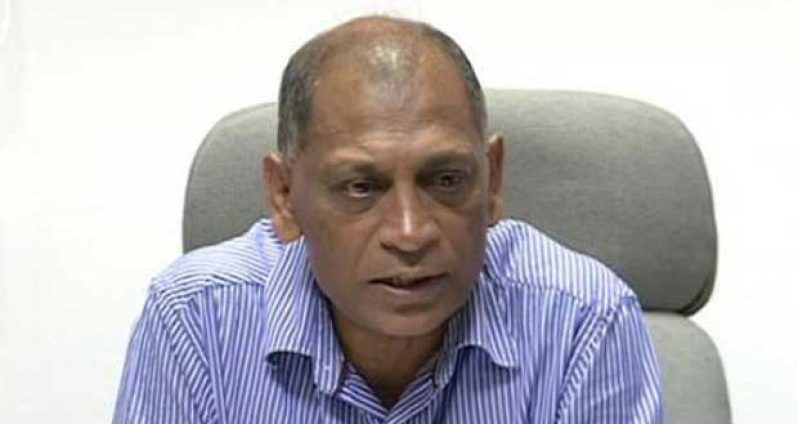THE Blairmont sugar factor is outsourcing to private cane farmers some 200 hectares of land in 2015, and Agriculture Minister Dr Leslie Ramsammy has noted that the intention is to continue increasing private cane farmers’ contribution to the Guyana Sugar Corporation (GuySuCo).“Last year we did 1,000 acres at Uitvlugt. The idea is that, by 2020, some 30 per cent of the sugar cane supply to GuySuCo factories will be done by the private sector,” he said.
Dr Ramsammy says this undertaking is part of GuySuCo’s turnaround plan. “All the estates are identifying land – some of which is being used now, some unused – to encourage private cane farmers. We expect that this (engagement of private cane farmers) will happen in all the estates,” he said.
In the case of the Blairmont Estate, the 200 hectares being outsourced have never previously been used for sugar cane cultivation. The land is located in the Ellis Block, situated on the western side of the Blairmont cane cultivation plot.
GuySuCo’s eight operable sugar estates are located at: Uitvlugt, West Coast Demerara; Wales, West Bank Demerara; Enmore and La Bonne Intention, East Coast Demerara; Rose Hall, Albion and Skeldon on the Corentyne Coast in East Berbice; and Blairmont, West Bank Berbice.
“All of the estates are supplied by private cane farmers to some extent. Currently, overall, about eight to 10 per cent of the cane supply is done by private cane farmers,” Dr Ramsammy said.
The Agriculture Minister added that while progress in engaging private cane farmers has been encouraging, there is more work to be done. “While we have succeeded in getting private farmers involved, we are far from where we want to be. What we are trying to do is increase the acreage cultivated by private cane farmers,” he said.
MECHANIZED HARVESTING
Dr Ramsammy explained that, as part of the partnership between the farmers and GuySuCo, the Corporation does the harvesting.
“We do harvesting, they pay for that because we use the machines from GuySuCo,” he said.
As a result, Minister Ramsammy noted, the lands that are being identified for private cane farmers are lands that are ready to be converted to allow mechanized harvesting.
“We have been converting around 2,500 hectares a year. This year we expect to convert another 2000. The goal is that, by 2020, a total of 60 per cent of the land cultivated for sugar will be ready for mechanized harvesting,” he said.
Dr Ramsammy acknowledged that “manageable” amounts of land are outsourced to private cane farmers to ensure that there are no unnecessary challenges. “We have to be careful not to given large amounts of land at one time. We have to give them what they can manage,” he said.
In the meantime, the deadline for submission of expressions of interest for access to the 200 hectares of land at Blairmont passed on April 6. There was also a site visit by interested persons on Thursday. The endeavour is being managed by GuySuCo’s Agriculture Operations Department.
The cycle of the current sugar crop comes to an end in early May.
FIRST CROP
Harvesting of the first crop is ongoing at all eight estates, with a production of approximately 40,000 tonnes of sugar.
In 2014, GuySuCo recorded a production of 216,147 tonnes -– the first crop having surpassed the 75,000-tonne target, bringing in about 80,000 tonnes.
The calamitous drop in sugar prices on the global and preferred market scene, which challenges all sugar industries; coupled with the dramatic fall in earnings and, by extension, cash flow; and the prevailing weather conditions were among several of the difficulties that affected the local sugar industry during 2014.
The industry has seen dismal sugar production levels in past years, but Guyana has since been taking steps to turn around its sugar industry, and hopes to soon meet a 300,000-tonne target.
There is also a projection that the sector would reach a 400,000-tonne goal by 2020.
GuySuCo is targeting a 2015 production of some 240,000 tonnes.
By Vanessa Narine




.png)









